Studying for the Certified Meeting Professional exam? MPI Ottawa has you covered!
Learn More
Check out all the exciting events taking place in the upcoming year!
Learn More

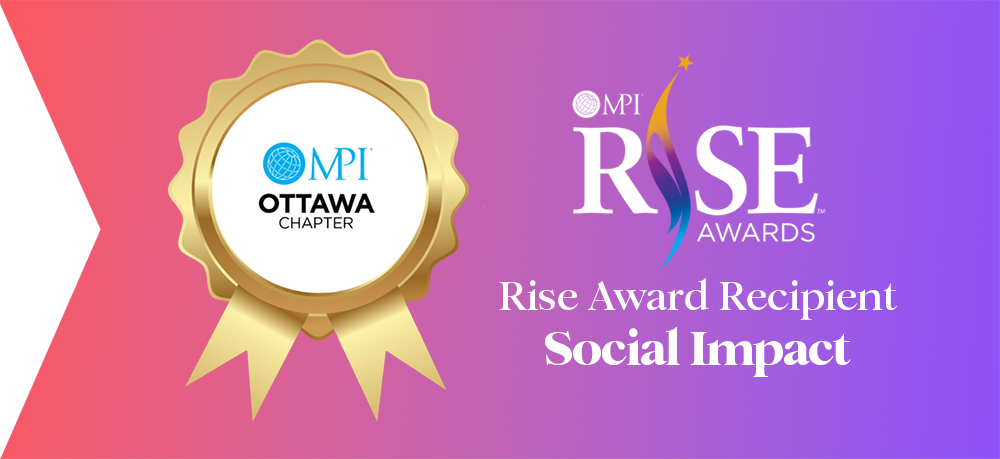
Make Land Acknowledgements More Than Lip Service
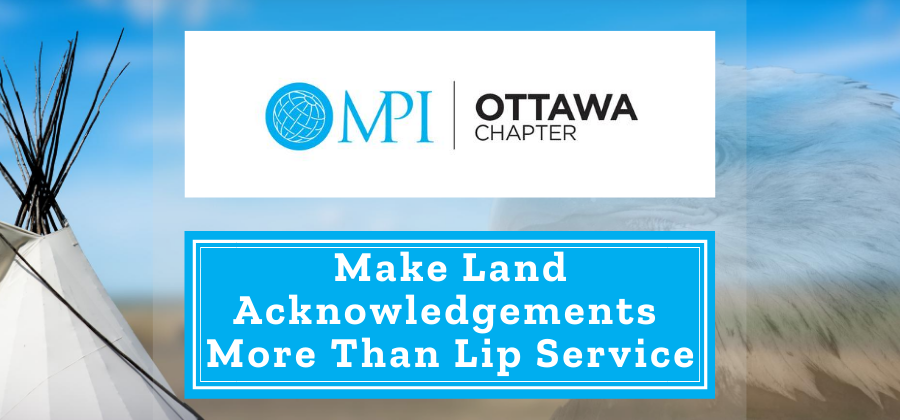
 When in-person meetings and gatherings were still happening, there was a growing trend to include a land acknowledgment at the beginning. As part of reconciliation efforts with Indigenous Peoples (First Nation, Metis, and Inuit), groups would take the time to recognize the original stewards of the territory where the event is taking place. Sometimes this is just a few words spoken by the chairperson or emcee, or it could include inviting and gifting an Elder or knowledge keeper to offer an opening prayer and to smudge the space.
When in-person meetings and gatherings were still happening, there was a growing trend to include a land acknowledgment at the beginning. As part of reconciliation efforts with Indigenous Peoples (First Nation, Metis, and Inuit), groups would take the time to recognize the original stewards of the territory where the event is taking place. Sometimes this is just a few words spoken by the chairperson or emcee, or it could include inviting and gifting an Elder or knowledge keeper to offer an opening prayer and to smudge the space.
So, how does offering a land acknowledgement move organizations and the broader public toward reconciliation? And, is this action more than just reconciliation lip service?
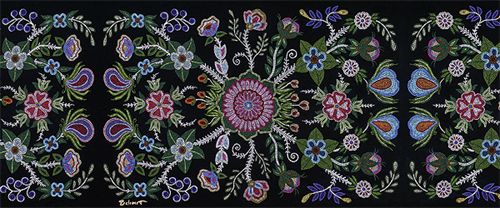
The Canadian Association of University Teachers published a “Guide to Acknowledging First Peoples & Traditional Territory”. Although it provides the necessary words, it also encourages readers “to reach out to local Indigenous communities to open pathways for dialogue”. As we are called to take our acknowledgement beyond the written script, my first questions are why, how, and where do we start?
I recently joined a land acknowledgement learning experience to explore these questions further, and participants were encouraged to unpack their understanding of what and why exactly we are acknowledging land.
 The virtual experience was hosted by Strix Insights and facilitated by Calgary Foundation. This partnership arose from a question posed by Alli Marshall, founder of Strix Insights, to her LinkedIn community, with regards to offering land acknowledgement during virtual meetings. It was suggested to Marshall that she connect with Tim Fox, Vice President with Calgary Foundation, as he has been leading and guiding the organization through an internal cultural shift and reconciliation journey.
The virtual experience was hosted by Strix Insights and facilitated by Calgary Foundation. This partnership arose from a question posed by Alli Marshall, founder of Strix Insights, to her LinkedIn community, with regards to offering land acknowledgement during virtual meetings. It was suggested to Marshall that she connect with Tim Fox, Vice President with Calgary Foundation, as he has been leading and guiding the organization through an internal cultural shift and reconciliation journey.
 Fox mentioned that he and his colleague, Katie MacDonald, Cultural and Community Engagement Coordinator, often host and facilitate dialogue with their staff, board, and volunteers through a variety of context-setting experiences to help inspire the actions they will take along an individual and organizational reconciliation journey. At Calgary Foundation, the organization had asked similar questions early on about land acknowledgement and mobilized a video resource to share the wisdom and voices of a variety of Elders, which highlights traditional narratives of the land where Calgary sits today.
Fox mentioned that he and his colleague, Katie MacDonald, Cultural and Community Engagement Coordinator, often host and facilitate dialogue with their staff, board, and volunteers through a variety of context-setting experiences to help inspire the actions they will take along an individual and organizational reconciliation journey. At Calgary Foundation, the organization had asked similar questions early on about land acknowledgement and mobilized a video resource to share the wisdom and voices of a variety of Elders, which highlights traditional narratives of the land where Calgary sits today.
Fox and MacDonald shared that these types of experiences, the type that offer deep context setting and shared dialogue, are necessary elements to approach any form of change, including reconciliation efforts. For Calgary Foundation team members, reconciliation is a priority; their Vital Priority Areas that are guided by community input, led them to understand that it is important to strengthen relations with Indigenous peoples.
This led me to have more questions: what is the deeper context that is needed to strengthen our relations with Indigenous people, and how does land acknowledgement factor into this?
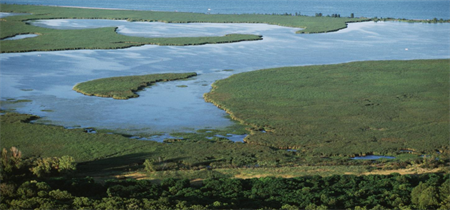
According to Fox, incorporating land acknowledgement is a step toward truth-telling and context setting that is necessary to begin on the path toward reconciliation, and he urges those incorporating an acknowledgement to move beyond a script. As a proud member of the Blackfoot Confederacy from the Blood (Kainai) Nation, he invited the session participants to consider the shared history between Indigenous peoples and Canadian settlers. There is a colonial past that has not always been broadly shared or spoken about, one where settlers appropriated land and systematically restricted Indigenous people from practicing their culture and traditions.
The historical context-setting brought participants through a deeper understanding of First People’s relationship to ancestral lands prior to contact, the introduction of settlers to Indigenous Peoples, the oppressive approaches that were taken, and how they continue to impact communities today. For instance, the Indian Act of 1876, that still governs today, is a paternalistic, and race-based piece of legislation that made promises that were never kept.
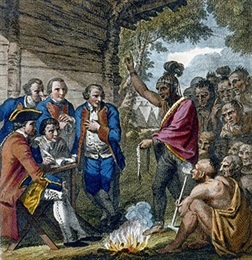 Historical treaty-making context was also shared, where we explored the evolution from Peace and Friendship Treaties, which speak of peaceful relations, to treaties that began to be made for the intention of land ownership and dispossession of Indigenous peoples from their lands. Between 1871 and 1921, there were 11 treaties signed between First Nations and the Crown. These were used as tools to gain dominance over the land and the original stewards of these lands. These documents, strategically written in English only, sometimes signed by First Nations under threat of violence, created restricted hunting and trapping grounds, relegating First Nations to “reserves”.
Historical treaty-making context was also shared, where we explored the evolution from Peace and Friendship Treaties, which speak of peaceful relations, to treaties that began to be made for the intention of land ownership and dispossession of Indigenous peoples from their lands. Between 1871 and 1921, there were 11 treaties signed between First Nations and the Crown. These were used as tools to gain dominance over the land and the original stewards of these lands. These documents, strategically written in English only, sometimes signed by First Nations under threat of violence, created restricted hunting and trapping grounds, relegating First Nations to “reserves”.
It is quite clear that there are many complexities that need to be considered when discussing treaty relations. For instance, treaties do not cover the entire land mass of what we now call Canada, so some territories were taken over without any formal agreements at all. In Ottawa for example, we often hear: “We would like to begin by acknowledging that the land on which we gather is the traditional unceded territory of the Algonquin Anishinabeg People.” Unceded means that it was never surrendered through treaty or war.
 Land acknowledgements are an opportunity to honour the traditional stewards of these lands, and to strengthen the relationship between Indigenous Peoples and Canadian settlers through recognizing our shared histories on this land. Dr. Leroy Little Bear, a recognized leader and advocate for Indigenous rights, teaches how intricately land is linked to culture and identity. Many of the cultural symbols of Canada are not representative of Indigenous peoples, and land acknowledgement is one way that we can create balance in our cultural mosaic. Fox shares that this is not meant to replace symbols like the singing of a national anthem, but rather to create and restore some balance.
Land acknowledgements are an opportunity to honour the traditional stewards of these lands, and to strengthen the relationship between Indigenous Peoples and Canadian settlers through recognizing our shared histories on this land. Dr. Leroy Little Bear, a recognized leader and advocate for Indigenous rights, teaches how intricately land is linked to culture and identity. Many of the cultural symbols of Canada are not representative of Indigenous peoples, and land acknowledgement is one way that we can create balance in our cultural mosaic. Fox shares that this is not meant to replace symbols like the singing of a national anthem, but rather to create and restore some balance.
Marshall shared with participants that it is worth going “off book” with land acknowledgements by starting with a traditional script and then either sharing her personal story on learning more about our nation’s history or facilitating a dialogue with delegates about the significance of land acknowledgement. MacDonald noted that as someone of settler descent, it is important to also consider context around her own ancestry, the history of her family’s settlement in what is now Canada, and how reshaping this narrative to include the truth of Indigenous and settler relations can evoke feelings of shame and guilt. However, these are necessary emotions to unpack, if we are truly on a path of reconciliation.
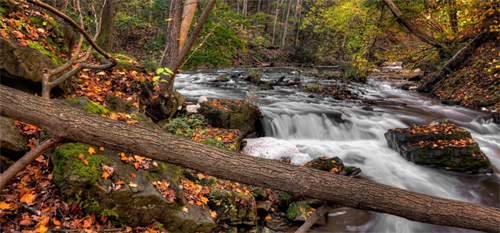
Land acknowledgements such as the one quoted above from Ottawa, and ones that are very similar to this parody skit, are those of reconciliation lip service. Fox encourages meeting organizers to go beyond a few obligatory opening remarks and find ways to inform attendees about the shared history on this land, like the examples Marshall and MacDonald share. He mentions that with open hearts and minds, every gathering of people, whether in-person or virtual, can create a moment of truth-telling that will strengthen the Canadian movement towards reconciliation with our harmful, colonial history, and toward a path of right relations with Indigenous Peoples.
 Article written by: Melanie Hudson, National Association of Federal Retirees and Katie MacDonald, Calgary Foundation
Article written by: Melanie Hudson, National Association of Federal Retirees and Katie MacDonald, Calgary Foundation
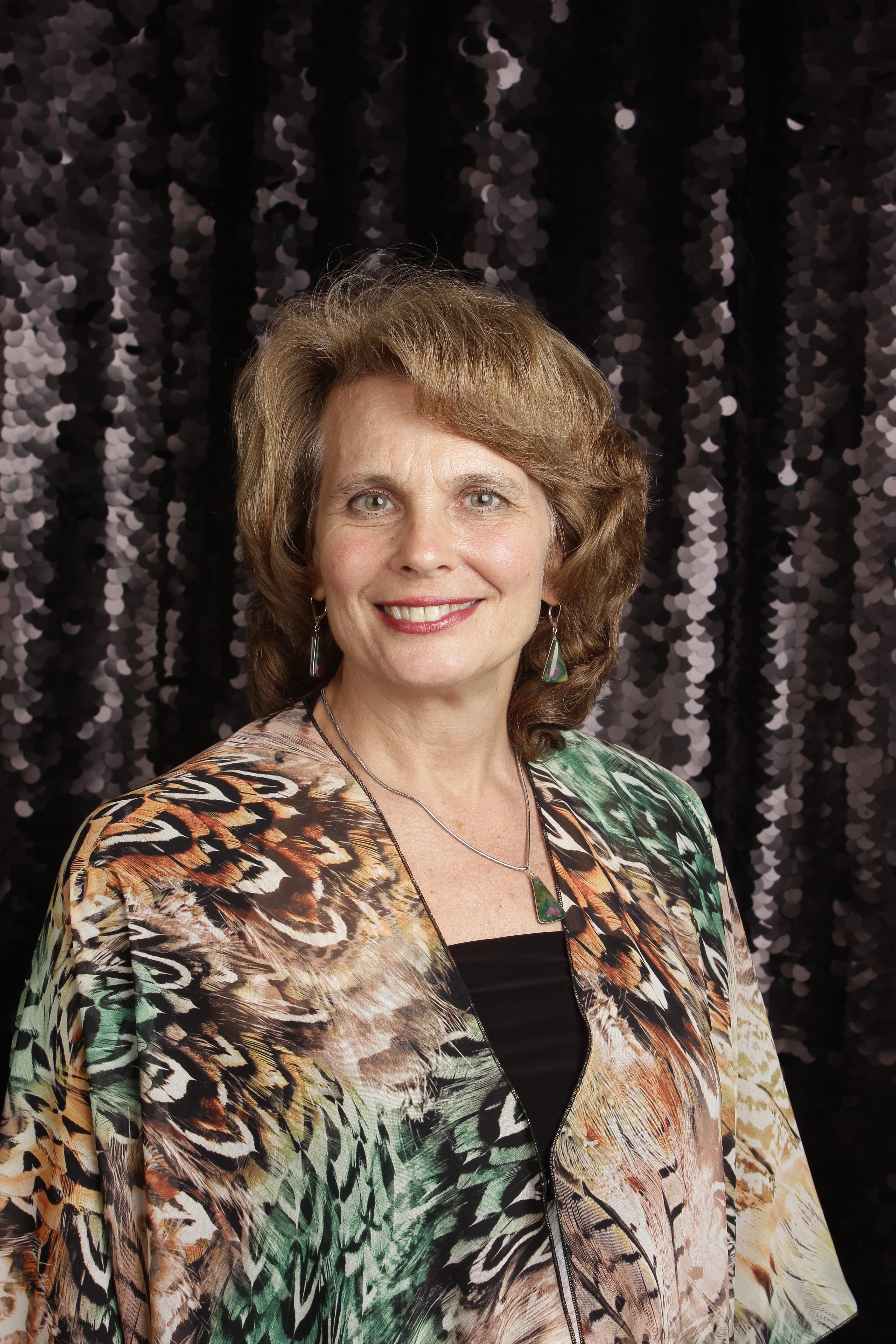
Leave a commentOrder by
Newest on top Oldest on top